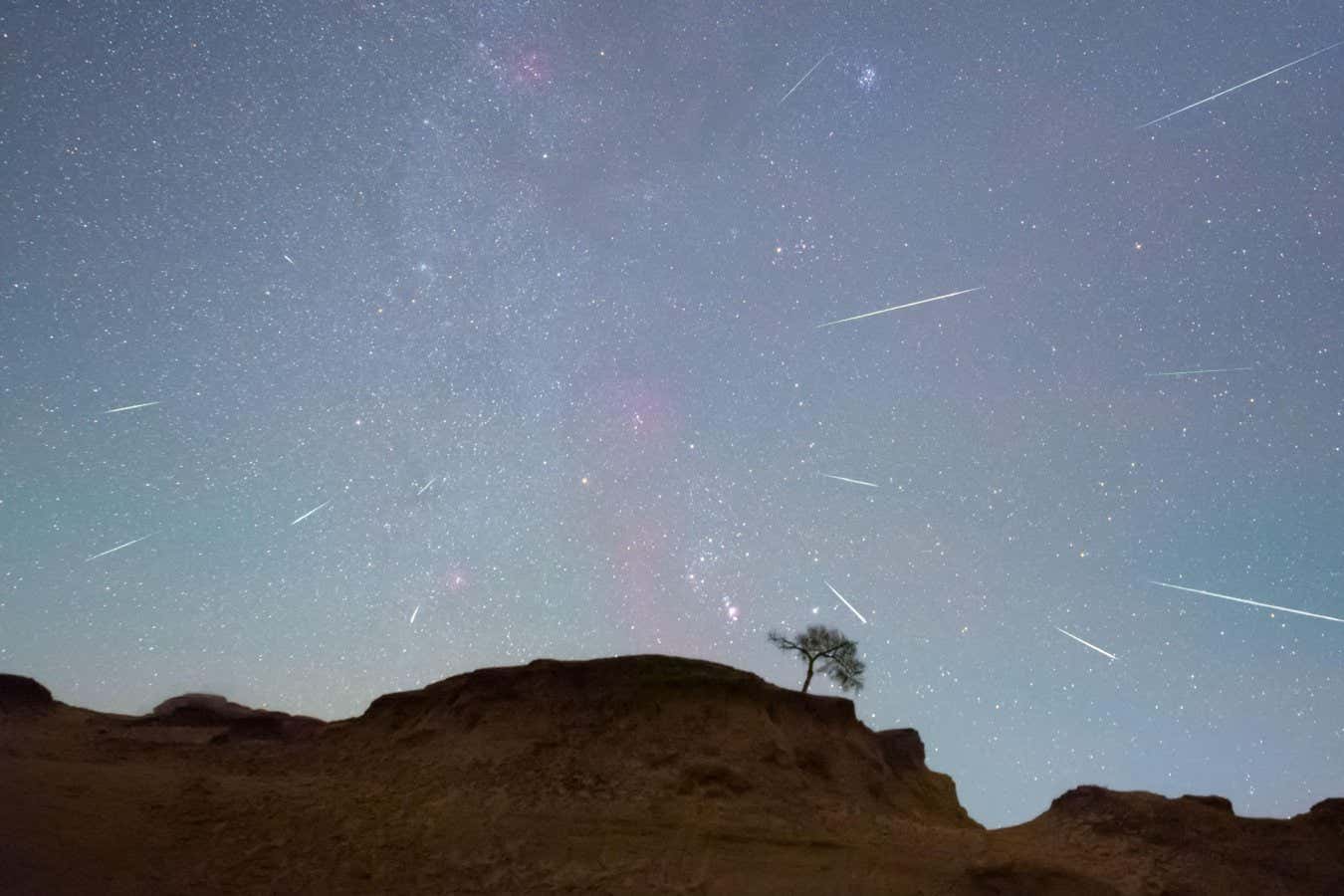The Orionids are flashes of light that appear in the sky every year when Earth passes through debris from Halley’s comet. On 21 October they will be visible from almost anywhere in the world
By Alex Wilkins
20 October 2023
The Orionids, seen over Daqing in Heilongjiang province, China, on 22 October 2020
Sipa US / Alamy
The Orionid meteor shower started this year on 2 October and will finish on 7 November, but its peak should be on the night of 21 October, with the brightest meteors in the early hours of the morning. It is one of the most reliably active annual meteor showers and should be visible across the world. As long as you can see the Orion constellation, also known as the hunter, you stand a good chance of a spectacular display. With the moon only partly illuminated during this period, around 20 meteors an hour should be visible in clear skies.
What are meteor showers?
Meteors are the flashes of light that occur when debris enters our atmosphere and heats up so rapidly that it emits intense bright light. They normally happen at random, but when Earth passes through a cloud of debris from a comet, many more meteors can be seen over consecutive days or weeks, depending on the size of the cloud.
Why are they called the Orionids?
The Orionids are named for the fact that they appear to come from the Orion constellation, but these faraway stars have nothing to do with the production of the meteors themselves. The flashes are actually pieces of debris from Halley’s comet, which visits Earth’s vicinity around once every 75 years and was last seen in 1986. While spotting the comet itself is a rare occurrence, Earth swings through its debris field every year.
Advertisement
Read more
Slicing the moon in half would be disastrous for Earth – but beautiful
How can I watch the Orionids?
You will be at the mercy of the weather to an extent. Assuming you have clear skies, try to find somewhere with minimal light pollution and avoid using a torch or the light from your phone so that your eyes adjust to the dark. The highest rate of meteors will be after midnight and before dawn.
Orionid meteors should be visible across the entire night sky, but they will appear to radiate from the Orion constellation because of the angle that Earth moves through the comet’s tail. Each meteor will only last a few seconds and will shoot across the sky — don’t get them confused with satellites, which will move smoothly across the sky for much longer periods.
